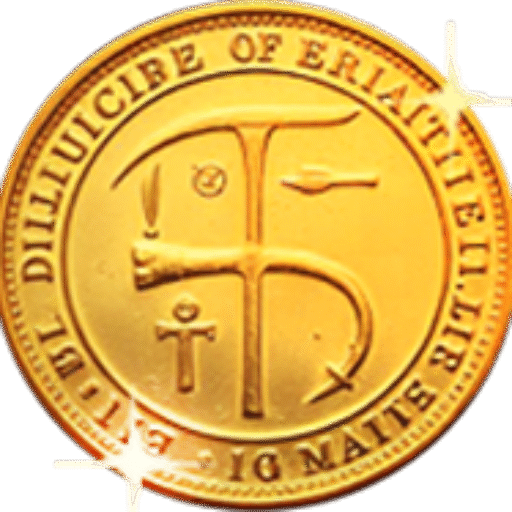The 1876-CC Seated Liberty Half Dollar: A Study of Rarity and Beauty

Between January 1, 1876, and the end of the business day on March 30, silver bullion, with a combined value of $1,417,000, was had by mine owners and entered the meeting rooms of the mint. The nuggets from these melts coined 1,813,192 pieces. Included in this total were 2,977 Trade dollars, coined from bars, many doubtlessly tagged as the property of the superintendent and the Assay Commission of Nevada.
During the winter of 1973-1974, I showed proof of the 1876-CC Seated Liberty half dollar by a friend who lived in the Reno, Nevada, area. The original mintage of this issue totals 604,000 pieces, but the number of survivors through the past century is measurably less. It is to find coins that circulate for twenty to thirty years.
As a result, Aunt Bea anxiously awaits her cubs’ return on a cold winter’s night. During March 1876, shipments of silver in the form of bars, ingots, and coins began to flow into the treasury vaults at the Carson City Mint. These shipments represented the vast mining bonanza provided by the Comstock Lode over the previous fifteen years.
Historical Background of the Carson City Mint
Initially, only the coining of dollars was authorized and approved. The last time coins of any denomination had been at the San Francisco Mint was October 1864. The massive demand for San Francisco silver dollars suggested the Carson City Mint was a good idea. In reality, the Mint production was far below predictions, and from 1864 through 1870, San Francisco minted approximately 1/20 of the nation’s silver dollar production. Until a new policy, half-dollars would be struck in San Francisco in 1870, Philadelphia in 1870, 1873, and 1874, and Carson City in 1870 and 1878.
The Carson City Mint – with a slated opening date of December 1, 1864, did not open on time. A superintendent until July 13, 1865, and even on September 1, had only hired six “mechanics, one carpenter, one mason, and six laborers” to start the construction. A bakery built of adobe was located on the site, as was an engineering office and part of a nearly-finished structure that the Government purchased to cut costs. All three buildings would require extensive repairs, which delayed the opening further. It wasn’t until 1869 that coinage began, some 4.5 years later.
An Act of Congress authorized the creation of the Carson City Mint, passed on March 3, 1863. Many other mints also received their authorization by the same Act. The ongoing Civil War created a historic shortage of circulating coins, and gold and silver bullion was plentiful. Silver from the Comstock Lode was very prevalent in states such as California. The present San Francisco Mint was already striking coins, but Nevada’s newfound wealth was such that another Mint was deemed necessary. It would be the newest in a series of branch mints established to commercialize the precious metals of America’s western states.
Numismatic Significance of the 1876-CC Seated Half Dollar
“Rarity” may also signify the “togetherness” of specific varied collector parameters (or the parameters of many varied collectors) under circumstances deemed to highlight mainly focused devotion or, in a specialized sense, the more esoteric mavens. If such “significance” is denoted as “rarity” to an outstanding degree, such coins can be termed “rare.” Beyond the regular evaluations of date, type, variety, and grade exist gravitations toward a vigorous appreciation of beauty and engraving excellence, specifically under the guise or appearance of the collector’s main focal point.
Such gravitations toward rare coins exhibit signs of increasingly desirable rarity and venturesome adventure for these ardent collectors, who accept and appreciate particular designs or marvels that a somewhat rare low-mintage coin may present in a marketplace atmosphere of skyrocketing prices.
In assessing a coin, the term “rarity” pertains to the extant number or public availability of that specific coin (usually by date, type, variety, and grade), for a particular series or the entire field of numismatics, a coin to be rare because of a small assessed extant number (or public availability), mainly when that coin is challenging to acquire in reasonable quality and particularly if mandated to complete a specific collection.
Rarity is a term often utilized in numismatic writings but has widely fluctuating meanings and connotations. Not all terms and usages necessarily relate quickly or even precisely to the term “rarity.” Very distinct differences do exist, but the two most important, or the most necessary to coin collectors, may be defined generally as follows:
Analysis of the Gorgeous Coloration of the 1876-CC Seated Half Dollar
The usual cause of the colors seen on the Carson City seated coinage is humidity, which varies by severity. Average degrees of humidity result in bright colors—primarily muted pinks and light to hunter-greens, along with the more usual verdant green of pine affected by acid rain. The homestead quarters and 20-cent pieces have this general lineage’s most exciting branches.
What we can attribute the generally wild patina to might be brushing with or the proximity of a contaminant to remove some of the mint luster. Every seated coin designed by William Barber, which bears a large segment of exposed copper, is seen with one or more colors that eclipse two others. However, the colors may occasionally not be as intense, and the toning pattern may not be as intricate. The wedding or layered patina visually crushes the coin’s contours; it creates a beautifully nuanced crown effect. Unfortunately, it is also effective at camouflaging the fine details.
This study resulted in two main findings: First, the moderate rarity 1876-CC has been subject to excessive attrition. Surprisingly, there are few remaining pieces. Second, the survivors could be better represented in the WB series because there were many weakly struck coins. Most surprisingly, the coin, which generally defines all seated coinage, would be poorly struck because of its position in the coin press, with no upward movement—a constant pressure pressing forward.
Significant wheel bounce could have been the problem. The complete study aimed to determine if then-Chief Engraver William Barber and Assayer Rankin Marcil could have resolved the issue of excessive corrosion. Copper was rigid to buy, and the maximum amount of coins had to be.
Conclusion and Future Prospects for Collectors
We conclude by noting, however, that despite constant improvements in the estimation of price formation processes in numismatics, both numismatic theory and the proper price formation process still need to be discovered in the dark. The density function of prices predicted by our model provides an imperfect scaling for cheaper versions of the 1876-CC coin. It remains for historical prices, if those become accessible, to shed light on the implied pricing tail.
In this study, we exhaustively identified the population of the hitherto elusive 1876-CC twenty-cent piece. We explored this coin’s numismatics and used its population to construct an econometric model of price formation in numismatics, which we demonstrated outperforms ordinary least-squares in models with contextually generated coins.









Between January 1, 1876, and the end of the business day on March 30, silver bullion, with a combined value of $1,417,000, was had by mine owners and entered the meeting rooms of the mint. The nuggets from these melts coined 1,813,192 pieces. Included in this total were 2,977 Trade dollars, coined from bars, many doubtlessly tagged as the property of the superintendent and the Assay Commission of Nevada.
During the winter of 1973-1974, I showed proof of the 1876-CC Seated Liberty half dollar by a friend who lived in the Reno, Nevada, area. The original mintage of this issue totals 604,000 pieces, but the number of survivors through the past century is measurably less. It is to find coins that circulate for twenty to thirty years.
As a result, Aunt Bea anxiously awaits her cubs’ return on a cold winter’s
Between January 1, 1876, and the end of the business day on March 30, silver bullion, with a combined value of $1,417,000, was had by mine owners and entered the meeting rooms of the mint. The nuggets from these melts coined 1,813,192 pieces. Included in this total were 2,977 Trade dollars, coined from bars, many doubtlessly tagged as the property of the superintendent and the Assay Commission of Nevada.
During the winter of 1973-1974, I showed proof of the 1876-CC Seated Liberty half dollar by a friend who lived in the Reno, Nevada, area. The original mintage of this issue totals 604,000 pieces, but the number of survivors through the past century is measurably less. It is to find coins that circulate for twenty to thirty years.
As a result, Aunt Bea anxiously awaits her cubs’ return